Kepler
Latest

NASA offers first look at planet-rich Trappist-1 star system
NASA was quick to offer conceptual images of Trappist-1 and its abundance of Earth-sized planets. But what does the star system look like, really? At last, now we know... sort of. As part of a raw data release, NASA has offered a simple, 11-by-11 pixel animation that shows the dwarf star as it was on February 22nd. Technically, you're looking at a target pixel file that represents the light levels the Kepler space telescope caught while studying Trappist-1 for an hour. You won't see planets, unfortunately -- an Earth-like planet would barely make a blip in the brightness levels, even if it crossed directly in front of the star.

Astronomers have found the roundest object in the universe
The sun may look round from our viewing angle but it -- like most stars -- aren't as spherical as they seem. It's actually 10 kilometers wider at its equator than it is at its poles. This is due to stars' rate of spin and variances within their magnetic fields. Kepler 11145123, a burning orb just 5,000 light years from Earth, is an extraordinary exception to that rule.
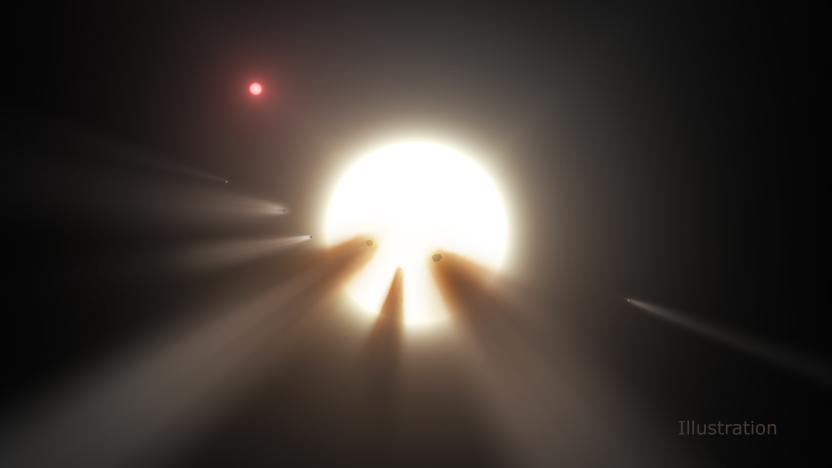
We still don't know why 'alien megastructure' star is dimming
Astronomers' favorite mysterious stellar object, which may or may not be surrounded by an "alien megastructure", remains unexplained. A reason for the flickering light emitted by the star known as KIC 8462852 continues to evade the scientific community. But scientists have taken a closer look at the star's brightness levels, and it's official: the amount of light coming out of it has decreased by three percent over four years. Further, it's only happening to this one sun and none of its neighbors. The plot continues to thicken.

The After Math: She blinded me with science
This was a pretty good week for all but VHS enthusiasts. NASA tested a new lightweight rocket material. The Kepler space telescope found a couple of potentially habitable exoplanets. Researchers built a robot out of a sea slug. And scientists at TU Delft went ahead and solved that whole nanoscale data storage issue. Numbers, because it's "rocket science", not "rocket art".

Kepler space telescope spots two planets that might support life
After recovering from a shutdown scare back in April, NASA's Kepler telescope continues its mission scoping out the stars for Earth-size planets orbiting other stars, crude criteria to find ones that might support life. The spacecraft just spotted four more exoplanets in a cluster around a foreign sun, two of which fit the bill to potentially contain living organisms.

Newborn exoplanet might be the youngest ever observed
NASA's planet-hunting Kepler space telescope has made another interesting cosmic discovery, the space agency reports this week. The youngest, fully formed exoplanet ever observed has been spotted just 500 light-years from Earth in the K2–33 star system. The star is a mere 5 million to 10 million years old, meaning the planet, lovingly dubbed K2–33b, is about the same age and practically a baby on the cosmic scale.

Scientists find the largest known planet to orbit two stars
The notion of planets in a Tatooine-like system with two or more stars isn't strange (they've been known since 1993), but a truly massive planet hasn't been seen before... until now. Scientists using NASA's Kepler space telescope have discovered Kepler-1647b, the largest known planet to orbit two stars (aka a circumbinary planet). The 4.4 billion year old gas giant is about as large as Jupiter, and orbits at a much further distance than other confirmed planets with a 1,107-day trip. That's still much closer than Jupiter, which takes 12 years, but it remains a rarity given our current knowledge.
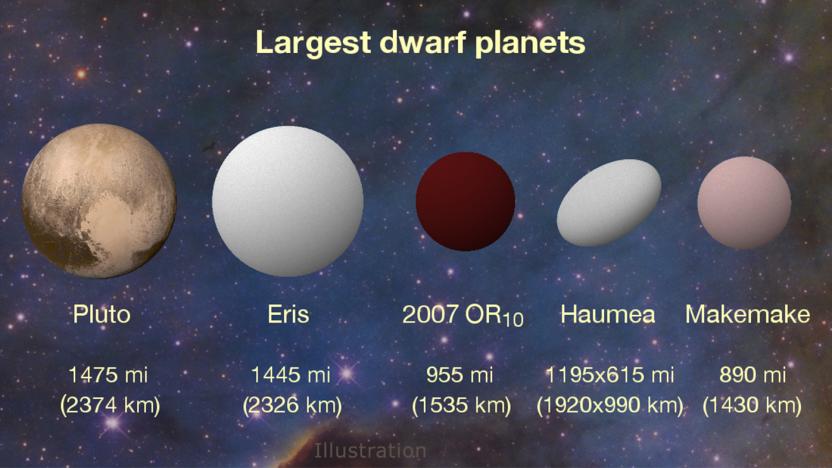
NASA upgrades 'Snow White' to our system's third-largest dwarf planet
Meet 2007 OR10: "the largest unnamed world in our solar system," according to NASA. At 955 miles in diameter, the dwarf planet is about two-thirds the size of Pluto, and is believed to have both water ice and methane on its surface.
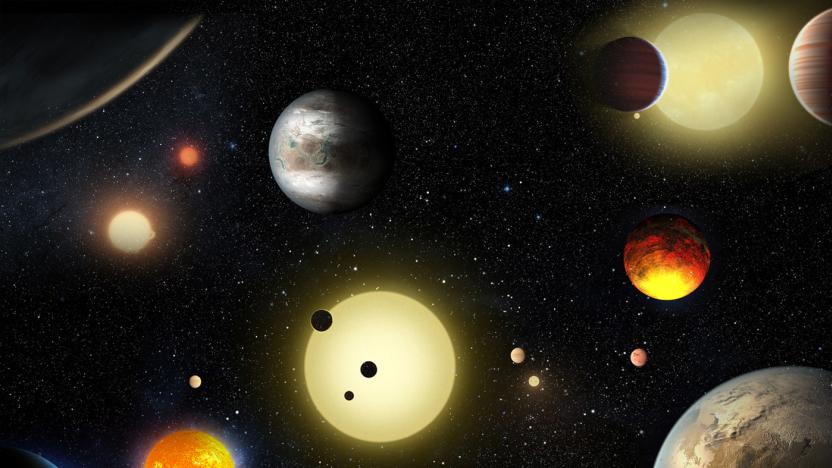
Kepler telescope finds its largest-ever batch of planets
If you think the Kepler space telescope has already spotted a lot of exoplanets, you haven't seen the half of it... almost literally. After a lot of hype, NASA's Kepler team has verified the existence of 1,284 new planets. That's more than twice as many confirmed planets as before. Almost 550 from the new batch are big enough to be Earth-like rocky planets, while nine of them are in their host star's habitable zone and have the potential to support life.
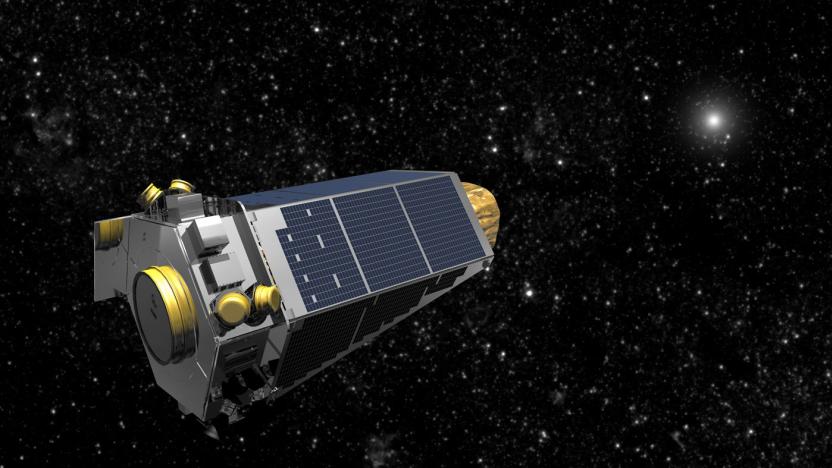
NASA's Kepler space telescope is back in good health
You can breathe again, space fans -- NASA has returned the Kepler space telescope to normal after a nerve-wracking weekend spent in an emergency mode. It's still not clear what triggered the crisis (a planned maneuver wasn't at fault), but the team plans to double-check systems for the next week before carrying on with its extended mission. Let's just hope this doesn't happen again. Kepler barely managed to survive its first big incident, and there's no guarantee that it'll be so lucky the third time around.
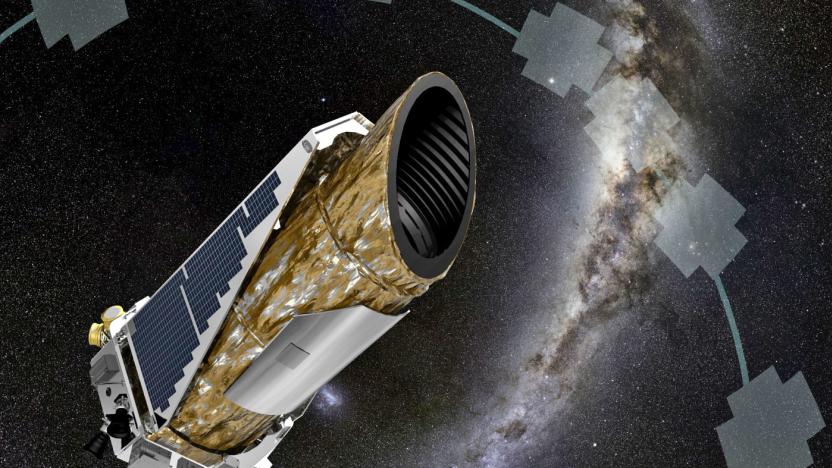
NASA's Kepler spacecraft is in 'emergency mode'
NASA's Kepler space telescope was supposed to be continuing its K2 extended mission to hunt down hidden exoplanets, but now scientists say the spacecraft is in trouble (again). While trying to make regularly scheduled contact on Thursday engineers found that it is operating in "emergency mode" and are focused on trying to recover it. That's a bit tricky however, since it's almost 75 million miles away from Earth, and it takes 13 minutes for signals to make a round trip.

NASA's resurrected telescope seeks wandering planets
NASA is kicking off a search for free-spirited exoplanets as part of the Kepler space telescope's extended K2 mission. It's an impressive quest for an instrument that was all but written off several years ago because of damage to its control wheels. NASA managed to stabilize the device using radiation pressure from the sun and it's been spotting exoplanets, stars and galaxies ever since. Now, the space agency wants to use the device to survey millions of stars in the Milky Way galaxy looking for signs of "wandering" exoplanets with no companion star.
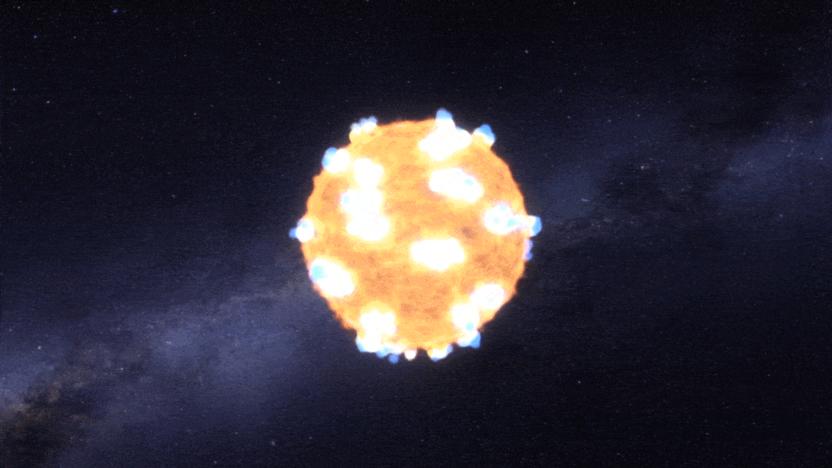
NASA catches the flash of a supernova for the first time
Spotting supernovae is relatively easy, but witnessing the immediate aftermath of those exploding stars? That's hard -- however, NASA has managed just that. By using the Kepler space telescope to capture the light of 500 galaxy every 30 minutes for 3 years, the agency caught the flash of a supernova's initial shockwave as a red supergiant (KSN 2011d) met its grisly end. That's no mean feat when this early burst only lasted roughly 20 minutes, and the target star was a whopping 1.2 billion light years away.

Exoplanet census suggests Earth really is special
There are an estimated 700 million trillion terrestrial planets in the observable universe. Among them, Earth may very well be one of a kind according to a new study from Uppsala University in Sweden. Astronomer Erik Zackrisson and his team have been running computer simulations to model all of the terrestrial planets that are likely to exist in the universe. The probabilistic exoplanetary statistics that they've gleaned from these simulations could potentially upend the Copernican principle and will soon be published in The Astrophysical Journal (it's currently up on arXiv).

Astronomers spot a star with a Jupiter-like storm
Unfathomably large storms aren't reserved solely for gas giants like Jupiter... they can exist on stars, too. Astronomers using the Kepler and Spitzer space telescopes have discovered a giant storm on W1906+40, a brown dwarf cool enough ("just" 3,500F) to have clouds full of minerals. It's so large that you could fit thee Earths within its volume, and it's been raging for years. In fact, it wasn't until scientists used Spitzer's infrared detection that they even realized that it wasn't just a massive sunspot.

See what every star system Kepler's found looks like compared to ours
Since its launch in 2009, the Kepler spacecraft has discovered more than 1700 planets in some 685 star systems. This slick animation from YouTuber Ethan Kruse shows every one of them with their orbits synchronized and drawn to scale. The planets themselves aren't exactly to spec -- I mean, just look at how small Jupiter is -- but that's only so that the smaller exoplanets aren't completely crowded out. Kruse reportedly employed the open source Kepler Orrery code to create the animation.

Astronomers find the first planet known to orbit a white dwarf
It's virtually certain that some white dwarfs still have planets in orbit despite their violent histories, but seeing those planets has proven difficult... at least, until now. Astronomers using the Kepler space observatory have spotted a planet circling around WD 1145+017, a white dwarf 570 light years away. Not that it's in great shape, mind you. The unusual light signature from the dying star hints that the planet is disintegrating under the star's gravitational pressure, leaving behind a giant dust cloud. Researchers suspect that it fell into its fatal orbit after the star's rapid change in mass triggered a planetary collision.

Inhabitat's Week in Green: 3D-printed villas and Earth-like planets
Each week our friends at Inhabitat recap the week's most interesting green developments and clean tech news for us -- it's the Week in Green. NASA dropped a bombshell this past week: The Kepler Space Telescope has discovered the most Earth-like planet to date. The rocky planet is slightly larger and warmer than our world, but it orbits a star and has the right conditions for liquid water. Meanwhile, the search for alien life goes on -- and Stephen Hawking gave his support to a $100 million project seeking to find out if we're alone in the universe. Exploring distant worlds is a challenging endeavor -- last week NASA proposed a novel robotic spacecraft that could harvest wind energy while surveying gas giants like Jupiter. And the Smithsonian Institution launched a Kickstarter to save Neil Armstrong's moon landing space suit, which is starting to fall apart after years of storage.

NASA discovers a 'close cousin' of Earth around a sun-like star
Talk about plucking a needle from a cosmic haystack. NASA just announced that its planet-hunting Kepler telescope has discovered Kepler 452b, an exoplanet that exists inside the habitable zone around a G-type star (that is, a star that's awfully similar to our own sun). The planet is about 60 percent more massive than Earth, and that's a pretty good sign -- researchers obviously aren't sure whether the Kepler 452b can support life, but the chances of it having a solid, rocky surface are "better than even."

NASA made travel posters for real exoplanets, and they're superb
NASA's Kepler telescope is still discovering new, distant exoplanets in our corner of the Milky Way, but oftentimes they're hard to visualise and easily forgotten about by some of us normal folk. Now, to get everyone dreaming about these potentially habitable worlds, NASA's Jet Propulsion Laboratory has drawn up a trio of beautiful posters by the "Exoplanet Travel Bureau." All three echo the WPA's iconic travel prints from the mid-1930s, with classic typefaces and swathes of flat, contrasting color. Given we don't know exactly what each planet looks like, the designers have taken some creative liberties here -- but they should still be more than enough to spark your own imagination and curiosity in the stars.







